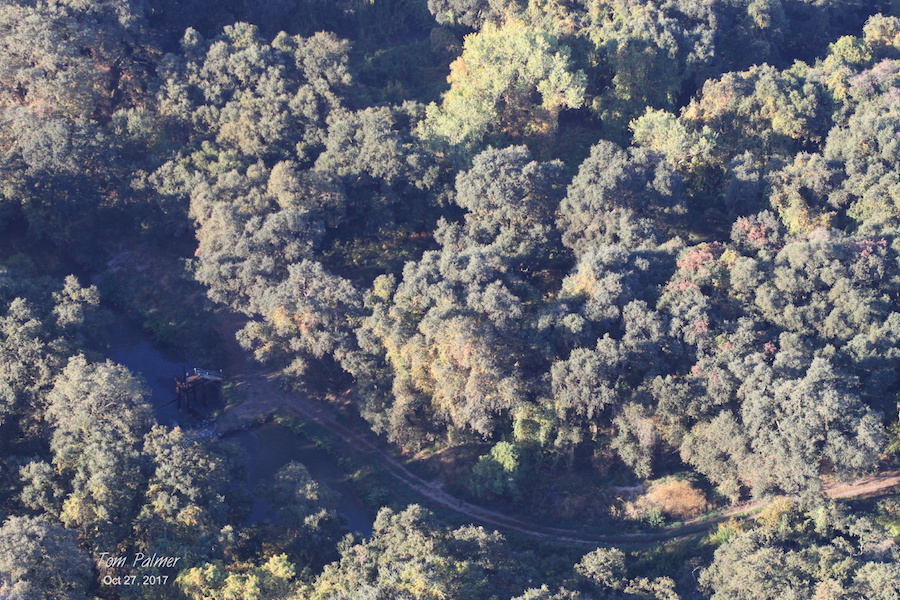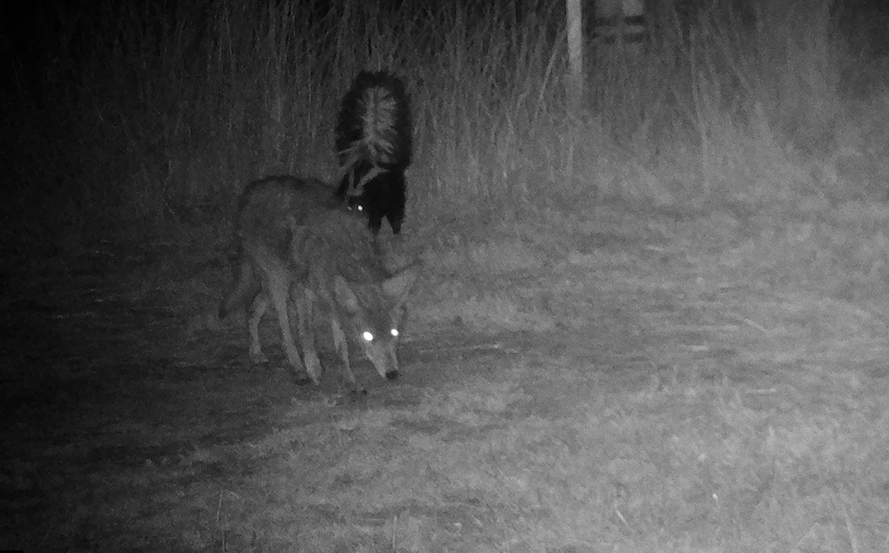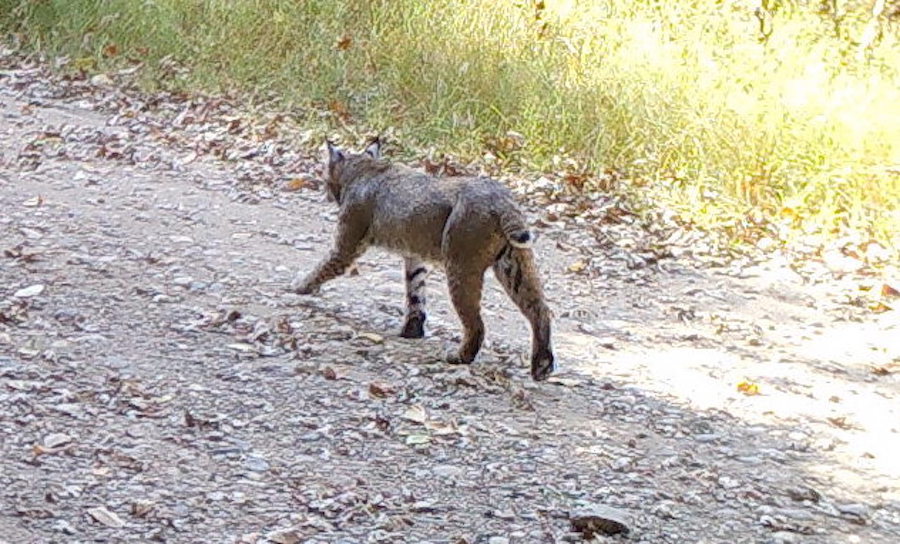Will Changing Seasons and Cameras Bring Mountain Lions?
The first big snowfall hit the Sierra this last weekend and the changing landscape at higher elevations can mean different movement patterns for the animals who live there. A mountain lion or two may be thinking about trying their luck in the Valley where there could be territory to claim and new prey opportunities. Mountain lions can disperse at any time of year. While they typically are thought to breed between December and March, it’s known that lions can mate and have kittens at any time of year. And kittens usually stay with their moms for 1½ to 2 years before they’re forced to go find their own territory and mates, so mountain lion dispersal patterns are hard to predict. It can depend on the health of the local population, the amount of habitat available, the personality and experience of individual lions, whether lions get into trouble over real or suspected livestock depredation, prey availability and kitten survival rate. Litters generally have from 2 to 4 kittens but mortality rates of the young can be high. And because these big cats are so secretive and fearful of humans, we only have population estimates in California.
People may think they are seeing more lions in rural areas lately but what is more likely happening is that urban and rural development are destroying mountain lion habitat, forcing the lions to align their shrinking territories next to human activity because they have nowhere else to go.
Mountain lions who make it to the Preserve from the Sierra must first navigate a gauntlet of agricultural and rural interests to the east. Many lions don’t make it as far as the Preserve before they are shot and killed. While it is illegal to shoot mountain lions in California unless a depredation permit is issued, there are some who employ what is known as ‘shoot, shovel and shutup.’ This means that there’s no way to know how many mountain lions are being killed under local revenge actions.
Mountain Lion 411! A recent discovery in mountain lion ecology and behavior was made by Dr. Mark Elbroch. He has been studying and documenting social behavior among lions feeding at kills known as direct reciprocity. This means that not only is the kill made by one individual shared, the second individual is much more likely to reciprocate by letting the first individual feed from one of their own kills in the future. Large carnivores are typically thought to avoid each other but Dr. Elbroch reports not only seeing reciprocity behavior among unrelated lions but repeated instances among the same lions, showing a memory of past reciprocity! Read more and watch a short video here: https://voices.nationalgeographic.org/2017/10/11/giving-to-get-reciprocity-among-mountain-lions/
In the Field: Our search for a mountain lion on the Preserve continues, and to that end we’ve changed the locations of several cameras, moving them off well-traveled access roads to areas that appear to have a good deal of wildlife movement through visual confirmation of game trails, tracks and scat. We regularly see deer in these areas and coyotes, bobcats and other animals pass by as well.
Our crew went out last Friday and decided on the placement for the new camera posts and then one of our crew used a 50-pound hand-operated post-pounder to drive the metal posts deep into the ground so they’d be secure and sturdy for holding our cameras!

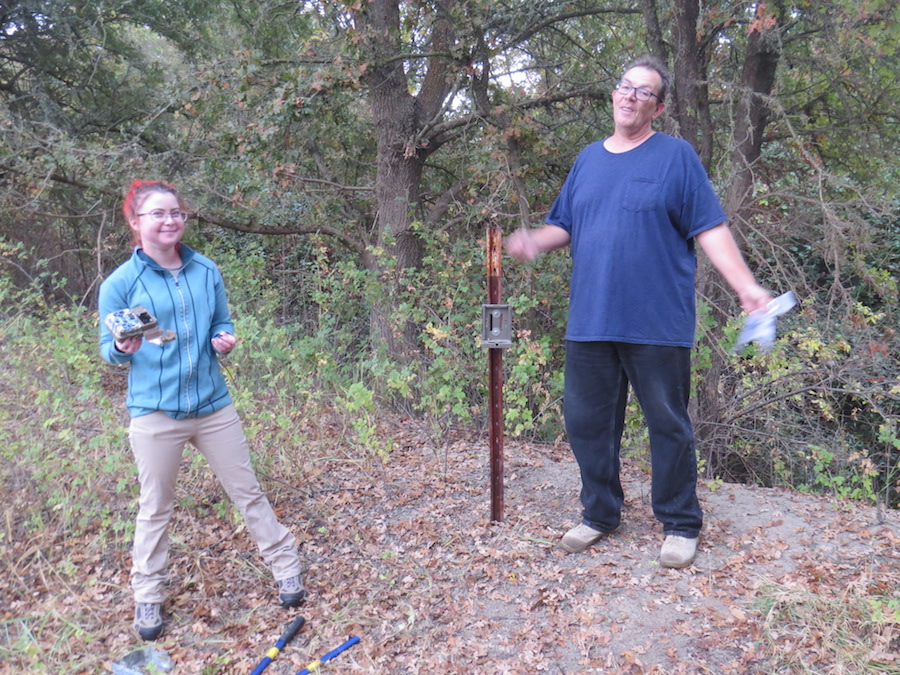
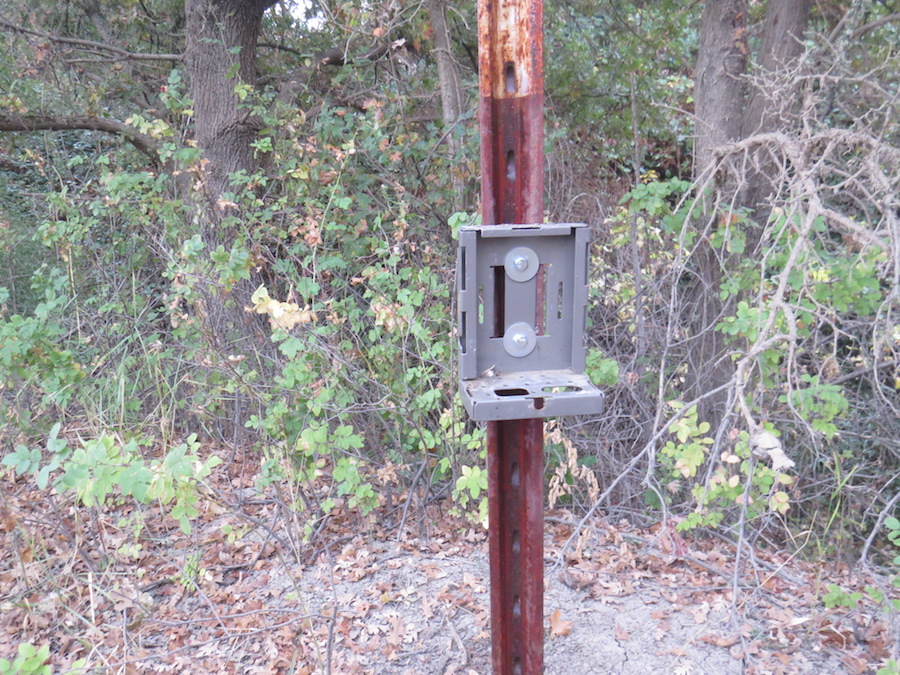
We had a treat at one of the cameras as a North American river otter family was out in the nearby slough, likely hunting for fish and other prey. There were four of them and once they felt they were far enough away from us humans, they began to swim and loaf a bit and we got to watch them dive, tails up and cruise along on the surface before they swam away around the curve in the slough.


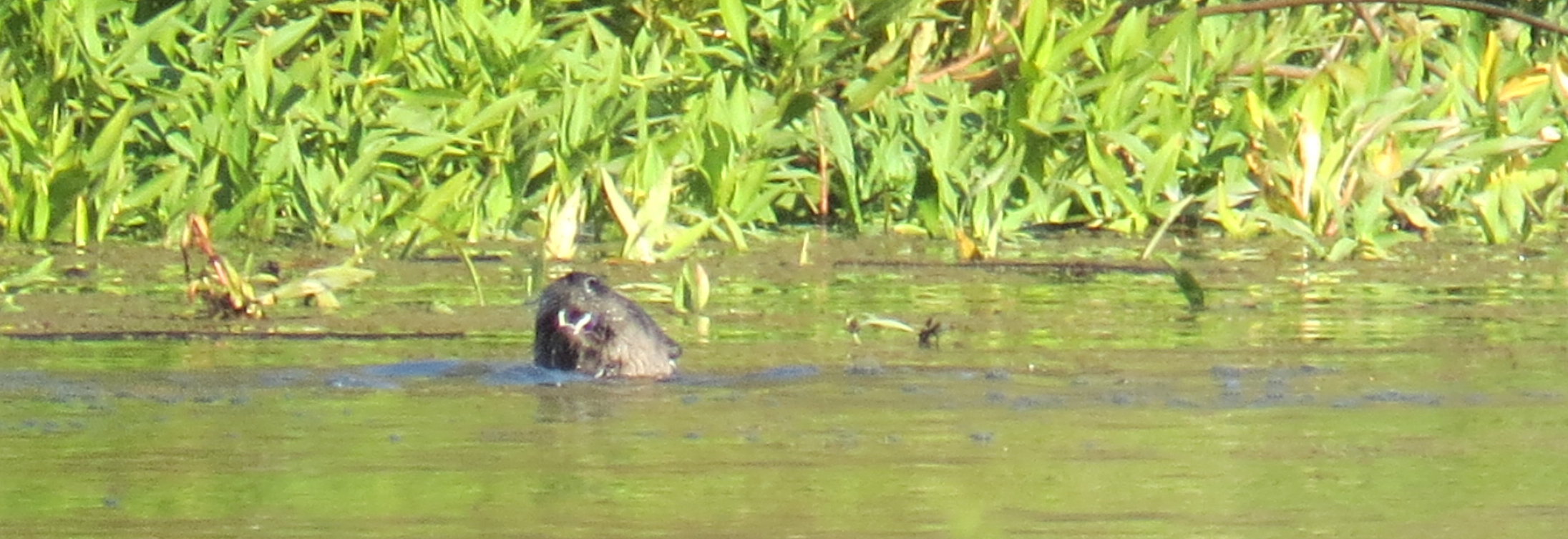
It was just an otter kind of day because as we drove up the slough to the next camera, an otter ran out onto the road, far ahead. We pulled up next to the slough where he or she had popped up and got out of the car. There’s a road across the slough there and on the left side we could hear the urgent bird-like chirping call that otters use when communicating to each other. On the right side, we could hear a decided and equally urgent snorting, blowing out hard through the nose – another communication. After we stood quietly for about a minute, an otter tore out of the bushes from the right side and, at light speed, made a break for the other side about 10 feet from where we were standing. One can only imagine the courage that must have taken but clearly this member was desperate to rejoin the group. Upon the reunion, the trio proceeded apace up the slough away from us!


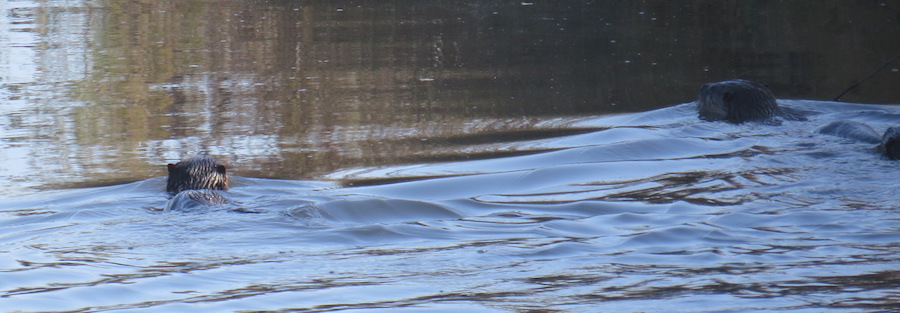
We checked one of the newly positioned cameras on Sunday and it was pretty exciting to look forward to what wildlife and sights the new positions would bring!
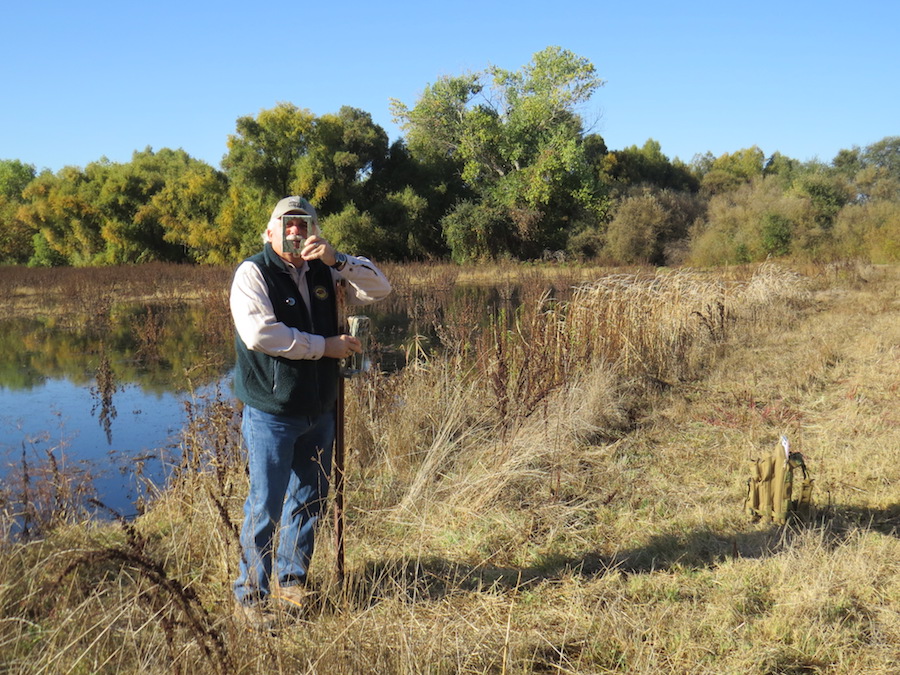

While we didn’t see a mountain lion on camera last Sunday, the images we collect never disappoint. One of the cameras caught a coyote and a skunk in a stand off! The brave skunk must have been reassured by his fire power and the coyote wasn’t too sure about what his chances were, it seemed. In addition to the images below, the sequence continued for another 15 images or so as two coyotes appeared and the skunk disappeared down into a ditch that runs parallel to the roadway there. The fate of the skunk and the coyotes is unknown. But this encounter speaks to very important questions about wildlife interactions on the Preserve. With a full suite of wildlife moving across the landscape, learning how predators and prey interact and live in the same area and also how those who may use the same resources interact – such as bobcats and coyotes or squirrels and jays – becomes integral to a better understanding of the complex ecosystem that is the Preserve.

Always a comforting and wonderful sight on the Preserve are the giant ‘shelter’ oaks who have been around so long that their branches have grown to sweep the ground. These majestic trees dominate the landscape and, as the descriptive term suggests, provide shelter and food for many species of birds and mammals. It’s thought that these shelter oaks grow those sweeping branches because they get so big and use them as a form of thermoregulation, to keep themselves cooler in the sweltering Valley summers and better insulated during the cold winters.
It seems that shelter oaks might also be appealing to mountain lions. Lots of good branches for lounging or lying in wait for a meal to pass by, their shade would be cooler in the summer heat and better insulated against winter chill. Next time you walk among the shelter oaks of the Cosumnes River Preserve, be sure to look up!

Aerial Photo Features! Here are more of lion camera crewmember Tom Palmer’s beautiful aerial photos of our camera locations. It’s a rare treat to be able to see details of the areas we’ve been monitoring for lion activity from above. And these views can help inform the decisions we make for camera placements going forward. Watch for more camera locations next week!

